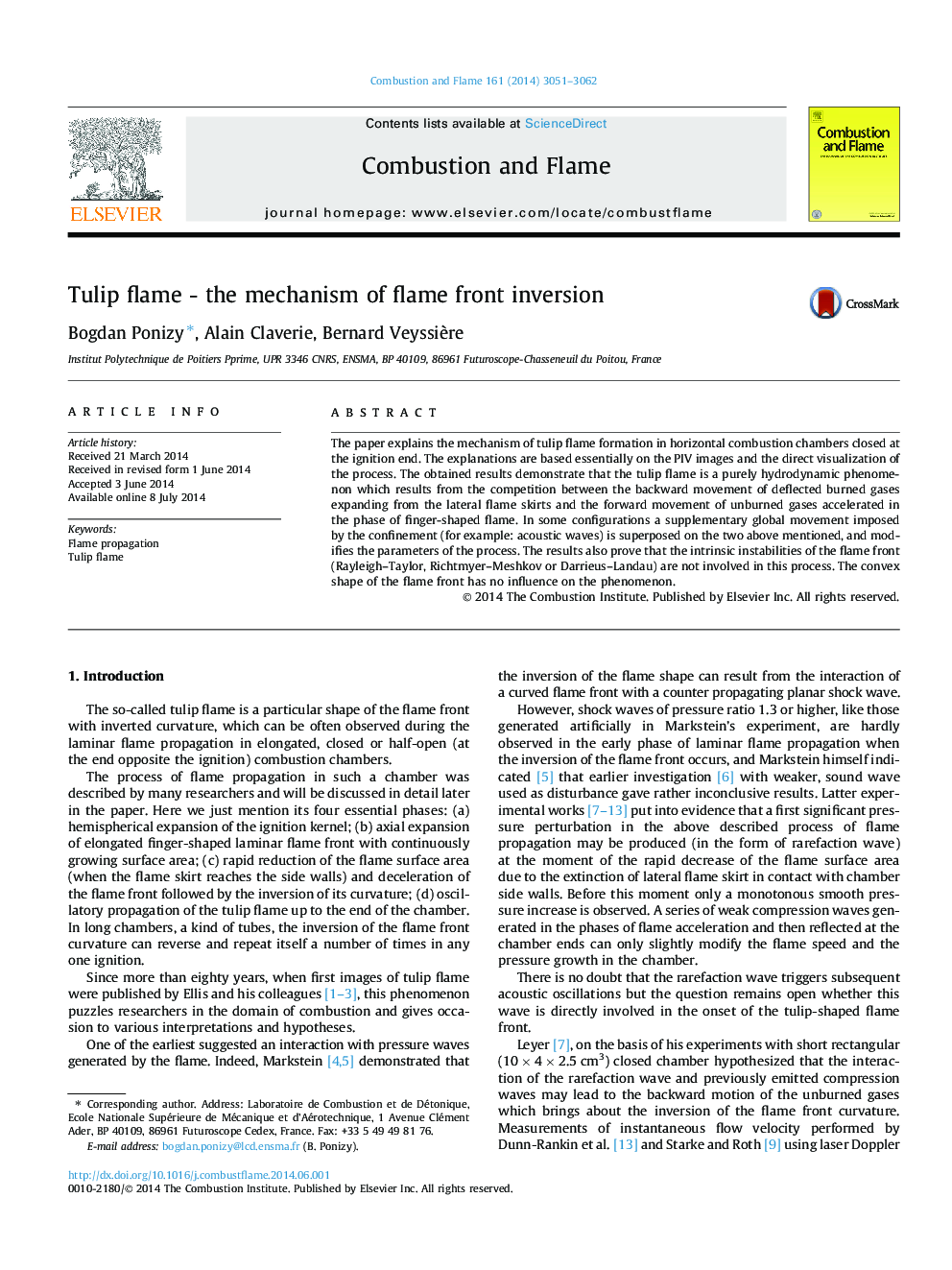| Article ID | Journal | Published Year | Pages | File Type |
|---|---|---|---|---|
| 10264383 | Combustion and Flame | 2014 | 12 Pages |
Abstract
The paper explains the mechanism of tulip flame formation in horizontal combustion chambers closed at the ignition end. The explanations are based essentially on the PIV images and the direct visualization of the process. The obtained results demonstrate that the tulip flame is a purely hydrodynamic phenomenon which results from the competition between the backward movement of deflected burned gases expanding from the lateral flame skirts and the forward movement of unburned gases accelerated in the phase of finger-shaped flame. In some configurations a supplementary global movement imposed by the confinement (for example: acoustic waves) is superposed on the two above mentioned, and modifies the parameters of the process. The results also prove that the intrinsic instabilities of the flame front (Rayleigh-Taylor, Richtmyer-Meshkov or Darrieus-Landau) are not involved in this process. The convex shape of the flame front has no influence on the phenomenon.
Keywords
Related Topics
Physical Sciences and Engineering
Chemical Engineering
Chemical Engineering (General)
Authors
Bogdan Ponizy, Alain Claverie, Bernard Veyssière,
